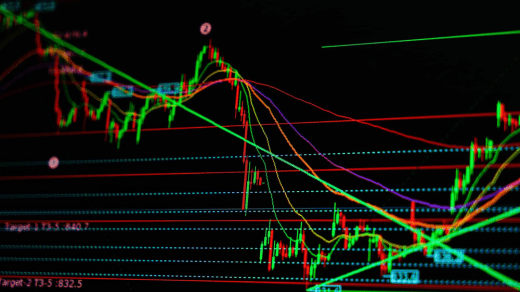
Certainly, here are 15 points discussing the pros and 15 points discussing the cons of technical analysis and fundamental analysis in trading:
Technical Analysis Pros:
- Focus on Price: Technical analysis primarily focuses on price movements and patterns, providing actionable trading signals.
- Objective and Quantitative: Technical analysis relies on objective data and mathematical tools, reducing subjectivity.
- Short-Term Signals: It is well-suited for short-term traders and day traders looking for entry and exit points.
- Historical Patterns: Technical analysis uses historical price data, which can be valuable for identifying recurring patterns.
- Technical Indicators: A wide range of technical indicators, such as moving averages and RSI, can aid in decision-making.
- Market Sentiment: It can capture market sentiment, as reflected in price movements and patterns.
- Charts and Patterns: Traders can use various chart patterns (e.g., head and shoulders, flags) for trend analysis.
- Risk Management: Technical analysis allows for setting stop-loss and take-profit levels based on price data.
- Suitable for Active Trading: It is well-suited for active traders who seek frequent trading opportunities.
- Visual Representation: Charts provide a visual representation of price data, aiding in analysis.
- Availability: Technical analysis tools and data are widely available for traders.
- Backtesting: Historical data can be used for backtesting strategies to assess their viability.
- Real-time Analysis: Technical analysis can be applied in real-time to make timely trading decisions.
- Pattern Recognition: It helps traders identify potential reversals or trend continuation patterns.
- Complementary: Technical analysis can complement other trading approaches, such as fundamental analysis.
Technical Analysis Cons:
- Limited Information: It focuses solely on price data, omitting fundamental factors that can influence markets.
- Short-Term Perspective: It may not be suitable for long-term investors who prioritize fundamentals.
- Subjectivity: Interpretation of technical patterns and indicators can vary among traders.
- Over-Reliance: Over-reliance on technical analysis can lead to missed fundamental developments.
- Historical Data Limitations: Past price data may not accurately predict future market movements.
- Whipsaws: False signals and market noise can result in losses due to whipsawing.
- Lack of Context: Technical analysis may not provide the broader economic or industry context.
- Inefficiency in Efficient Markets: Some argue that technical analysis is less effective in highly efficient markets.
- Data Manipulation: Price manipulation or anomalies can distort technical analysis signals.
- Emotionless: It may ignore market sentiment, which can be an important driver of short-term price moves.
- Limited for Fundamental Events: Technical analysis may struggle to predict market reactions to significant fundamental events.
- Inadequate for Illiquid Markets: In illiquid markets, technical analysis can be less reliable.
- False Sense of Precision: Charts may give a false sense of precision, leading to overconfidence.
- Not Predictive: It doesn’t predict the “why” behind price movements, only the “what.”
- Market Disruptions: Sudden market disruptions or black swan events can invalidate technical signals.
Fundamental Analysis Pros:
- Comprehensive Information: Fundamental analysis considers a wide range of data, including financials, economic indicators, and company fundamentals.
- Long-Term Perspective: It is well-suited for long-term investors who want to assess a company’s intrinsic value.
- Value Investing: Fundamental analysis can identify undervalued or overvalued assets for value investors.
- Market Trends: It helps identify broad market trends and economic cycles.
- Dividend Analysis: Fundamental analysis is useful for evaluating dividend-paying stocks and income investments.
- Contextual Insight: It provides context for market developments, helping traders understand the “why” behind price movements.
- Risk Assessment: It assesses the financial health and stability of companies or assets.
- Earnings Quality: Fundamental analysis evaluates the quality of a company’s earnings and revenue sources.
- Intrinsic Value: It aims to determine the intrinsic value of an asset, helping investors make informed buy or sell decisions.
- Long-Term Investment Planning: Fundamental analysis assists in long-term investment planning and asset allocation.
- Macro Analysis: It considers macroeconomic factors that can impact entire markets or sectors.
- Resilience in Crises: Fundamental analysis can help investors stay resilient during market crises.
- Quantitative and Qualitative: It combines quantitative financial metrics with qualitative assessments of companies or assets.
- Holistic View: It provides a holistic view of an investment’s potential, considering both internal and external factors.
- Transparency: Fundamental data is often publicly available and transparent.
Fundamental Analysis Cons:
- Time-Consuming: Conducting thorough fundamental analysis can be time-consuming and research-intensive.
- Subjective Valuation: Valuation methods can be subjective and open to interpretation.
- Long-Term Focus: It may not provide actionable short-term trading signals.
- Market Timing: Fundamental analysis may not pinpoint the best entry or exit points for trades.
- Market Efficiency: Some argue that markets quickly incorporate available fundamental information, reducing opportunities for profit.
- Overlook Technical Factors: Fundamental analysis may overlook important technical factors influencing short-term price movements.
- Unexpected Events: Sudden, unexpected events can disrupt fundamental analysis predictions.
- Complexity: Assessing all relevant fundamental factors can be complex, especially for global markets.
- Data Accuracy: Fundamental data may be subject to errors or misreporting.
- Information Lag: Market-moving news may become outdated by the time it’s fully incorporated into fundamental analysis.
- Behavioral Biases: Traders may exhibit biases when interpreting fundamental data.
- Limited for Non-Financial Assets: Fundamental analysis may not be as applicable for assets like cryptocurrencies or commodities.
- Influence of Speculation: Short-term price movements may be driven more by speculation than fundamentals.
- Information Overload: Access to vast amounts of fundamental data can lead to information overload.
- External Factors: External factors such as political events or sentiment can overshadow fundamental analysis.
In summary, both technical and fundamental analysis have their strengths and weaknesses, and traders often choose the approach that aligns with their trading style, time horizon, and market preferences. Some traders also combine elements of both approaches to gain a more comprehensive understanding of the markets.




